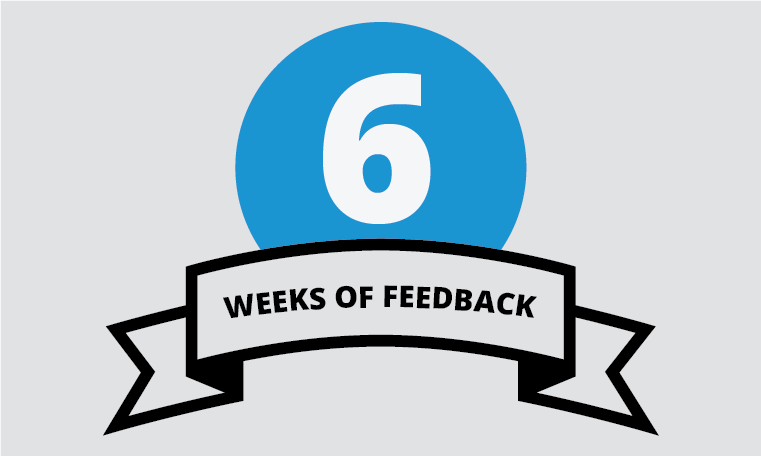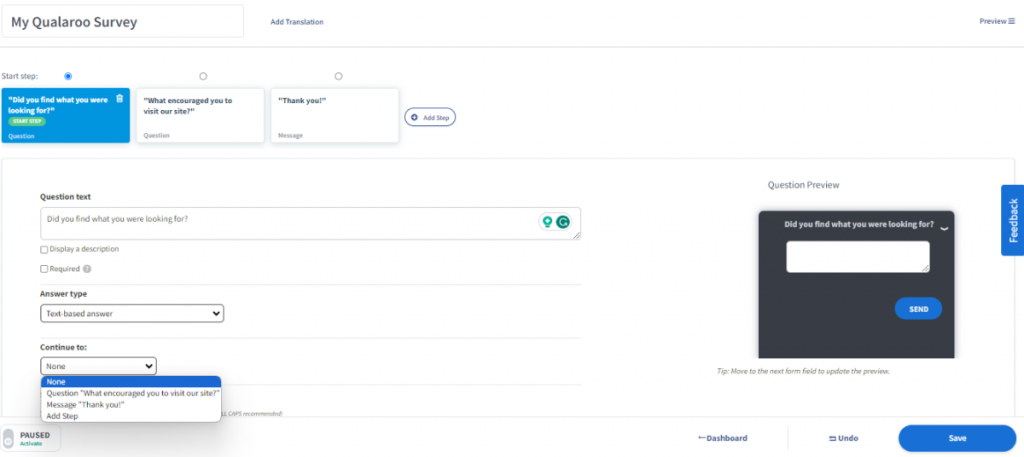Let’s talk numbers for a second: users in the U.S. are now spending over four hours a day on apps—an hour more than before the pandemic.
That’s a huge shift. Apps aren’t just something people use anymore—they’re where people spend the majority of their screen time. If you’re not tapping into that, you’re missing a huge opportunity.
For me, in-app surveys have been a total game changer. Why?
Because when users are already inside your app, it’s the perfect moment to ask for feedback that actually matters and makes a difference in real time.
But here’s the thing: it’s not just about throwing up a survey and hoping for the best. I’ve learned the hard way that survey design matters. It’s got to feel natural, fit into the experience, and most importantly, it needs to provide real value.
In this guide, I’ll walk you through the best practices I’ve found to design in-app surveys that actually work—helping you get the right answers without disrupting the user experience.
Let’s get started!
What Are In-App Surveys?
An in-app survey is a survey built right into your app or page. These short questionnaires are triggered contextually and are responsible for collecting customer feedback specific to the products, services, or user experience.
For instance, whenever you book an Uber, how often do you see a prompt to give a star rating for the service provided? Probably every time. That’s precisely how in-app surveys work. They are triggered at crucial touchpoints along the user journey when users interact with your app.
Unlike external surveys that take users away to another page, in-app surveys keep things simple. Users can quickly answer questions without leaving the app, often with just a few clicks.
This makes it easier for customers to give feedback while actively using your product, which means you get valuable insights at the perfect moment. It’s all about reducing friction and making the feedback process seamless for your customers.
Different Types of In-App Surveys
In-app surveys come in all shapes and sizes, each designed to gather different types of feedback and insights. Here are a few popular types of in-app surveys that can help you get the information you need:
- Feature Request Surveys: These surveys give your users a platform to suggest the improvements they want to see in future updates. By collecting this type of feedback, you can fine-tune your product roadmap and focus on the features that matter most to your audience. This ensures you build based on real user needs, keeping your app relevant and exciting.
- Customer Satisfaction Surveys: CSAT surveys like NPS (Net Promoter Score) and CES (Customer Effort Score) are critical for gauging how users feel about their experience with your app. These surveys help you measure user sentiment and identify areas that need attention. A strong focus on satisfaction translates into better retention and long-term success for your app.
- Churn Surveys: These surveys help you understand why users leave your app. These surveys typically target users who cancel their subscriptions or show exit intent. By gathering feedback from those leaving, you can unravel what went wrong and implement changes to prevent further churn. Addressing the reasons behind user departures can significantly improve your retention rates.
- Onboarding Surveys: When new users first start using your app, onboarding surveys allow you to learn about them immediately. You can ask about their preferences, interests, and expectations, personalizing their experience. By segmenting users based on this information, you can deliver targeted content that makes them feel valued and increases their likelihood of returning.
- Engagement Surveys: These surveys help you understand how often and intensely users interact with your app. These surveys typically ask about the features they use most and how often they engage with the app. This feedback gives you insights into which parts of your app users love and where you might need to make improvements to keep them coming back for more.
- Post-Interaction Surveys: Right after a user completes an important action—like making a purchase or engaging with customer support—post-interaction surveys let you gauge their satisfaction with that specific interaction. It’s a great way to spot what’s working well and identify areas where you could improve, ensuring every step in the customer journey is smooth.
- Usability Testing Surveys: These surveys focus on how easy or difficult users can navigate your app. These surveys gather feedback on user-friendliness, interface design, and the overall user experience. They help you spot friction points that might make the app hard to use, allowing you to improve the overall experience.
- Product Feedback Surveys: After users interact with a new feature, this survey type helps you measure its effectiveness and usability. By collecting product feedback, you can better understand whether the feature meets users’ needs and expectations, helping you make data-driven improvements to enhance the app’s overall functionality.
- Beta Testing Surveys: When rolling out new features or versions of your app, gathering feedback from beta testers is crucial. These insights allow you to make adjustments before the official launch, ensuring the product is bug-free and offers a smooth user experience when released to a broader audience.
- Pricing Feedback Surveys: If you’re unsure how your app’s pricing aligns with user expectations, pricing feedback is a great way to go. It helps you understand whether your target audience finds your pricing fair and if they believe the app offers good value for money. This feedback is instrumental when considering pricing adjustments or new subscription plans.
Benefits of Conducting In-App Surveys
We know there are plenty of ways to gather feedback, including email surveys, paper surveys, SMS surveys, and more. But when it comes to collecting in-the-moment feedback, none of them work as well as in-app surveys. In a nutshell, in-app surveys will help you with the following:
1. Higher Response Rates
Surveys can feel intimidating if they ask users about topics they don’t care about or understand. This often leads to no feedback or unreliable data.
In-app surveys solve this by targeting users based on specific actions, ensuring you ask the right questions at the right time. This increases response rates and helps gather valuable insights.
For example, in-app survey tools like Qualaroo offer in-context surveys that typically see response rates of 10-30% due to their seamless integration with the user experience. This also makes it easier to identify trends and patterns from the feedback.
2. Specific & Targeted Feedback
In-app surveys let you target specific segments by adjusting your feedback tool’s settings. Want insights from Android users in Lithuania? No problem!
You gather precise data to improve conversions and engagement by targeting the right segments. You can also time surveys or focus on specific actions to get relevant feedback.
For example, a generic NPS survey may give mixed results, but targeting it to specific features helps you understand the reasons behind the scores. The quicker you get feedback, the faster you can improve.
3. Faster Responses
Time is valuable, and waiting for users to come to you with problems can cost you. By that time, they might have already turned to your competitors for better products or services.
Deploy an in-app survey to capture immediate user feedback when a new feature or product goes live. The quicker you receive insights, the faster you can address issues and improve.
While responses might not be instant, in-app surveys allow you to collect feedback quickly without sending users elsewhere. This is far more efficient than relying on lengthy interviews or traditional methods.
4. Easy Data Analysis & Response Automation
Once you’ve set up a customer feedback loop, you can use automated workflows to maximize the use of your in-app surveys.
For example, if a user gives you a high Net Promoter Score (NPS), you can automatically thank them and ask if they’d be willing to leave a review on the app store. Loyal users, especially those with high NPS, are more likely to help promote your app.
The best part? You can automate responses using branching logic based on the user’s answers. And as for analyzing the feedback, you can easily pull the data to get deeper insights and take actionable steps for improvement.
5. Improved Customer Retention
By engaging users with in-app surveys, you gain valuable insights into their satisfaction levels and identify any potential issues early.
Addressing these concerns promptly helps increase customer retention by showing users that you care about their experience.
For example, if users mention difficulty navigating a particular feature, addressing this issue quickly can prevent churn and keep your customers loyal. The quicker you act on feedback, the more likely customers will stay faithful and continue using your product or service.
6. Actionable Insights for Product Improvements
In-app surveys give you direct feedback on how users experience your app’s features, providing valuable insights.
Instead of making guesses or assumptions, your product team can rely on accurate data to drive decisions. This eliminates guesswork and ensures you’re working on what matters most.
By using real-time feedback, you can make product development more efficient and improve your app faster and more effectively. These insights help you focus on areas of improvement that matter most to your users.
7. Faster Iteration and Product Updates
In-app surveys provide real-time insights, letting you learn how your users respond to new features or updates as soon as they’re rolled out.
Instead of waiting for long analysis periods, you can change your application on the fly based on immediate user input. This keeps your app agile and responsive to user needs nd helps you stay ahead of the curve.
This way, your app continuously improves while meeting or exceeding user expectations. This fast feedback loop also means you can take actions on issues quickly, improving the user experience.
8. Personalized Follow-Up
In-app surveys give you the ability to send personalized follow-up messages based on the feedback users provide.
This targeted approach helps you show that you care about individual feedback and creates a sense of attentiveness, making users feel valued.
For example, if a user rates an experience poorly, you can reach out immediately with an offer to resolve their concerns. As a result, you build a deeper connection with your users, which helps increase satisfaction and enhances loyalty over time.
How Much Do In-App Surveys Cost?
Cost can vary depending on the tool, number of users, and features you need. Here’s what to expect:
- Free plans: Some platforms, including Qualaroo, offer forever-free plans with essential features—perfect for startups or early testing.
- Paid plans: These usually start around a few dozen dollars per month and scale with usage, advanced targeting, integrations, and analytics capabilities.
- Enterprise plans: For larger teams, you’ll get advanced customization, dedicated support, and compliance features, with pricing tailored to your needs.
Think of in-app surveys as an investment: better feedback loops mean faster iterations, fewer product missteps, and ultimately less money wasted on features nobody wants.
FREE. All Features. FOREVER!
Try our Forever FREE account with all premium features!
Step-by-Step Guide to Creating Effective In-App Surveys
There are plenty of in-app survey tools, but few are as easy-to-use and resourceful as Qualaroo. With its intuitive interface, delightful reporting, awesome customer support, and ability to integrate seamlessly within your app, it’s one of the top choices for creating in-app surveys that generate valuable insights.
Let’s walk through the steps to design in-app surveys that give you valuable insights:
Step 1: Define Your Objective
First things first—what do you want to learn from your users? Are you trying to improve a specific feature or gauge overall satisfaction? Setting clear goals will help you craft the right questions and get meaningful responses.
Step 2: Click ‘Create New’
To get started, go to your Qualaroo dashboard and click ‘Create New’ at the top right corner. This is your first step toward building the perfect survey.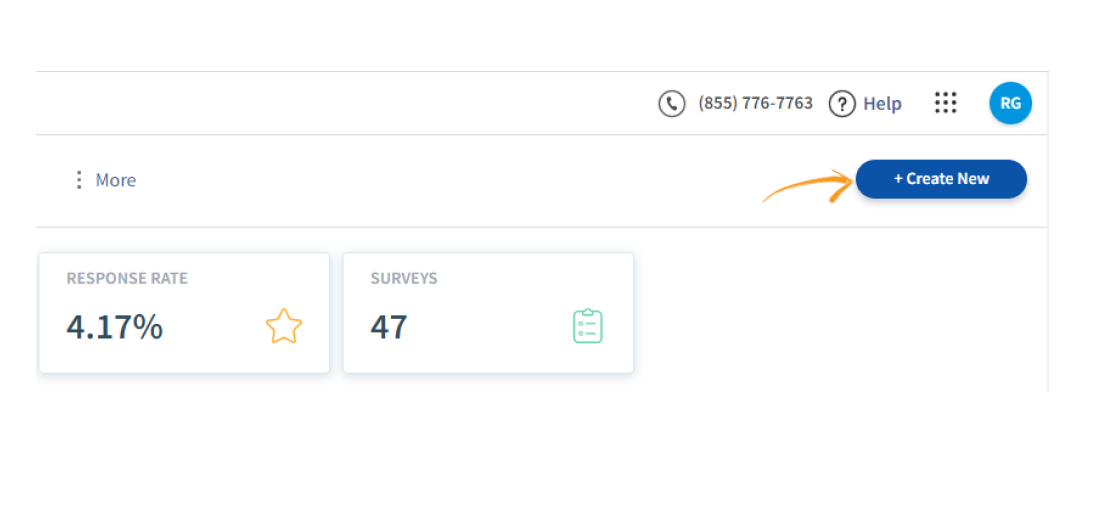 Step 3: Choose ‘Mobile Web Nudge’
Step 3: Choose ‘Mobile Web Nudge’
Once you’re in the dashboard, find the ‘Mobile Web Nudge’ option. You can either start from scratch or use a template. If you want a fresh start, we’ll create a survey from scratch in this guide.

Step 4: Enter Your Domain Name
Next, enter your website’s domain name and hit ‘Create’ at the bottom of the page. This will connect your survey to your website and ensure it’s set up correctly for mobile use.
Step 5: Set Your Survey Question and Answer Type
Now, it’s time to write your survey question. Choose the right answer type for your needs. To ensure your responses are valuable, you can randomize the answer order, add images, or even mark questions as required.
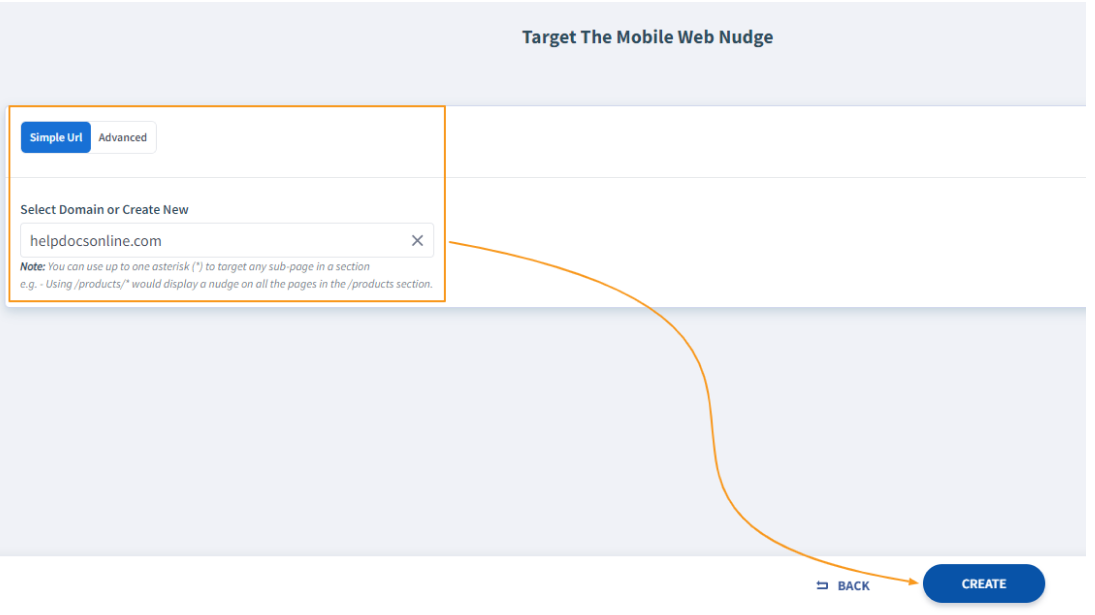
Step 6: Customize the Mobile Screener/Opt-in Trigger for Surveys
After editing your mobile survey, navigate to the ‘Screener’ tab. Check the box next to ‘Display a screener’ to enable it for your survey. This allows users to opt-in without disturbing their browsing experience. You can edit the headline, body, and CTA text to match your app’s tone. You can use Qualaroo’s branding or add your logo to the survey for added customization.

How Long Does It Take to Set Up In-App Surveys?
One of the biggest misconceptions I hear from founders is that setting up in-app surveys is a long, technical project. The truth? With the right tool, you can get your first survey live in as little as a few minutes.
Here’s what setup usually looks like:
- Integration: Most platforms (like Qualaroo) offer a simple code snippet or SDK to drop into your app or website. That’s often a 5–10 minute job for a developer.
- Survey creation: Using templates, you can write and launch your first survey in under 15 minutes. AI-powered builders make this even faster by suggesting questions for you.
- Testing & deployment: Before going live, preview your survey in different devices to ensure a seamless experience.
All in, you can realistically start collecting feedback the same day you sign up—no heavy lifting required.
3 Core Elements of In-App Survey Design
When we talk about in-app survey design, a few core elements play an important role in determining the ROI of your survey campaigns. These elements are:
1. Core Design
The design of your survey is the foundation of your entire feedback strategy. It sets the tone for how personalized or general your questions will be, which, in turn, affects the quality of insights you get. A solid design makes it easier to gather the correct data to make decisions that impact your business.
There are two main elements to consider when designing your survey:
- Question Types: The type of questions you ask depends on the data you want to gather. For example, if you want to know if users would recommend your brand, use an NPS survey. Open-ended questions will give you deeper insights if you want to improve your website. With tools like Qualaroo, you can choose from over 12 different question types to suit your needs.
- Number of Questions: The number of questions is just as important. You don’t want to overwhelm your users, but you also need enough data to make informed decisions. For short surveys, keep it to around 8-10 questions. This ensures you get valuable feedback without frustrating your users or causing them to abandon the survey. You want a quick, easy experience that doesn’t disrupt their journey on your app or website.
By focusing on these elements, you’ll design surveys that are both effective and user-friendly, driving better results for your business.
2. Aesthetics
When designing in-app surveys, making them visually engaging is key to higher response rates. Bland, generic surveys are easy to ignore. This is especially true for longer surveys that require more time and attention.
If your survey is designed to gather detailed or complex feedback, ensure it’s visually appealing and easy to engage with. If not, users may lose interest and abandon it. Studies show that visuals and colors can boost participation by 80%, so a little design effort goes a long way.
To improve your survey’s aesthetics, focus on elements like theme, layout, progress bar, and button placement. You can also adjust the time to complete and alignment for better readability.
If you’re unsure how to get started, feedback tools like Qualaroo often offer readymade templates that simplify customization and ensure your surveys catch users’ attention for the best results.
3. User Experience
User experience can make or break your in-app surveys. Poor experiences lead to fewer responses, wasting your time and effort. A seamless, user-friendly experience ensures that your surveys remain engaging and yield reliable data.
Several elements impact the user experience in surveys. For example, the deployment mode matters—if your audience prefers a sidebar but sees an overlay, they may feel frustrated. To find what works best, you should test different modes, such as overlays, sidebars, or buttons.
Mobile responsiveness is also critical. If your survey isn’t optimized for mobile devices, you’ll lose out on many users—63.38% of internet traffic comes from mobile. Ensure your survey tool is compatible across Android, iOS, and Windows platforms.
Finally, ensure your surveys load quickly and have a smooth submission process to avoid frustrating users. A “save and continue” option for longer surveys can also improve the experience, allowing respondents to finish later without starting over.
Data Privacy & Compliance in In-App Surveys
Collecting user feedback is powerful—but it also comes with responsibility. With global privacy regulations like GDPR, CCPA, and HIPAA, you must ensure your surveys comply from day one.
Here are some best practices:
- Be transparent: Let users know why you’re asking for feedback and how their data will be used.
- Collect only what’s necessary: If you don’t need personal identifiers, don’t ask for them.
- Offer opt-outs: Always give users the option to skip questions or decline surveys.
- Use secure tools: Platforms like Qualaroo are built with enterprise-grade security and compliance features (including GDPR and HIPAA readiness), so you can gather feedback responsibly.
Data privacy isn’t just about avoiding fines—it’s about building trust. When customers know their input is safe, they’re more likely to share honest, actionable feedback.
FREE. All Features. FOREVER!
Try our Forever FREE account with all premium features!
5 Real-Life In-App Survey Examples
It’s time for show & tell. Here are some real-life examples of engaging in-app survey designs to show you how brands do it right:
1. Qualaroo
Qualaroo’s survey widget is a perfect example of how you should implement in-app survey designs to collect quick and actionable insights from users in real-time. These surveys are entirely unobtrusive and don’t interfere with the user experience by popping over the app screen.
Qualaroo’s in-app survey UI design is extremely minimal, pleasing to the eye, and greatly appeals to it, complementing the color scheme and fonts. It makes the survey design even more immersive for the respondents. On top of that, these survey widgets can be customized for placement, targeting, and triggers and never slow down your web page.
You can also get the same widget on your website. Get your free template now.
2. Slack

Slack goes a step further in terms of the survey length. They also offer a single-page survey with three questions to collect qualitative and quantitative feedback. The three questions are strategically designed to collect qualitative and quantitative data, allowing Slack to gather measurable insights. The survey combines a basic CSAT question that asks users how they feel about using Slack. To add context to the CSAT metric, an open-ended question provides users with a text box to share their thoughts on the app.
3. Evernote
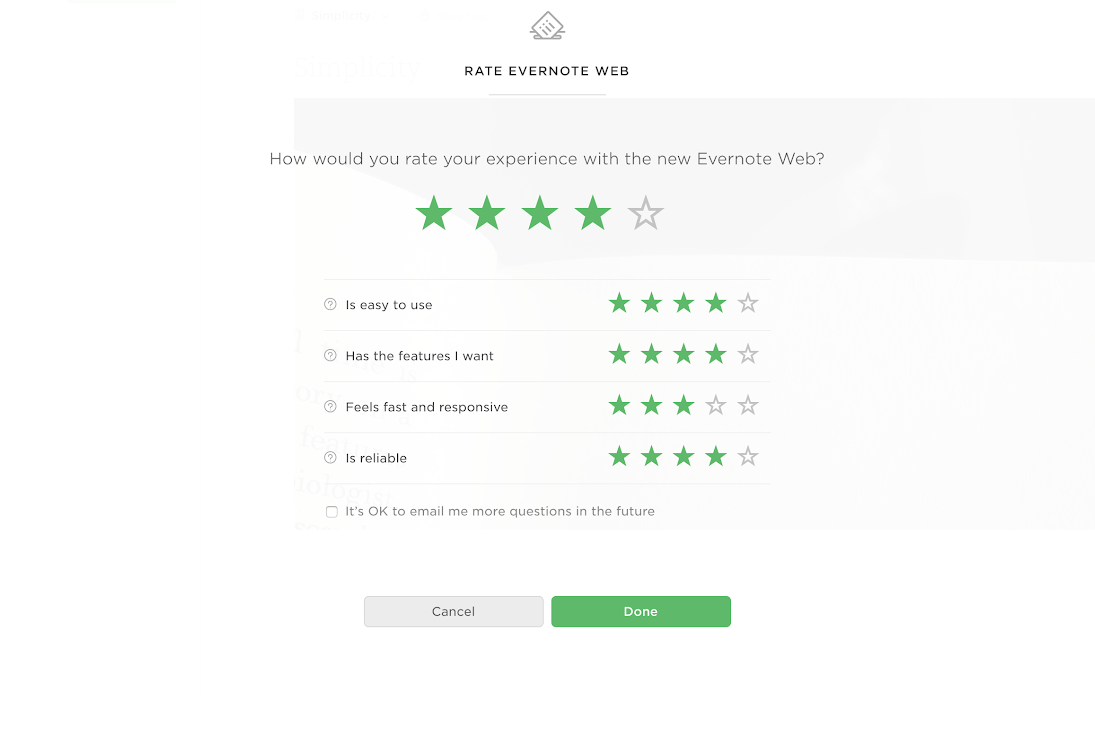
Evernote is another popular brand that helps users organize their information across multiple devices. To understand how their product performs across different channels, they deploy a simple in-app survey to collect device-specific information.
But the difference here is that Evernote goes into the details of measuring customer satisfaction by asking four questions about the different elements of experience, including ease of use, feature availability, responsiveness, and reliability.
4. Customer.io

Customer.io also happens to be quite elegant with its in-app survey design. It conducts a very subtle yet effective NPS survey (quite like Qualaroo) to keep a close tab on customer satisfaction.
Another element of this in-app survey design is the deployment of the NPS survey, as they take a very subtle approach here, too. The feedback pops up at the bottom of the screen, which doesn’t bother users and enables them to complete their tasks before giving feedback.
5. X (Formerly Twitter)
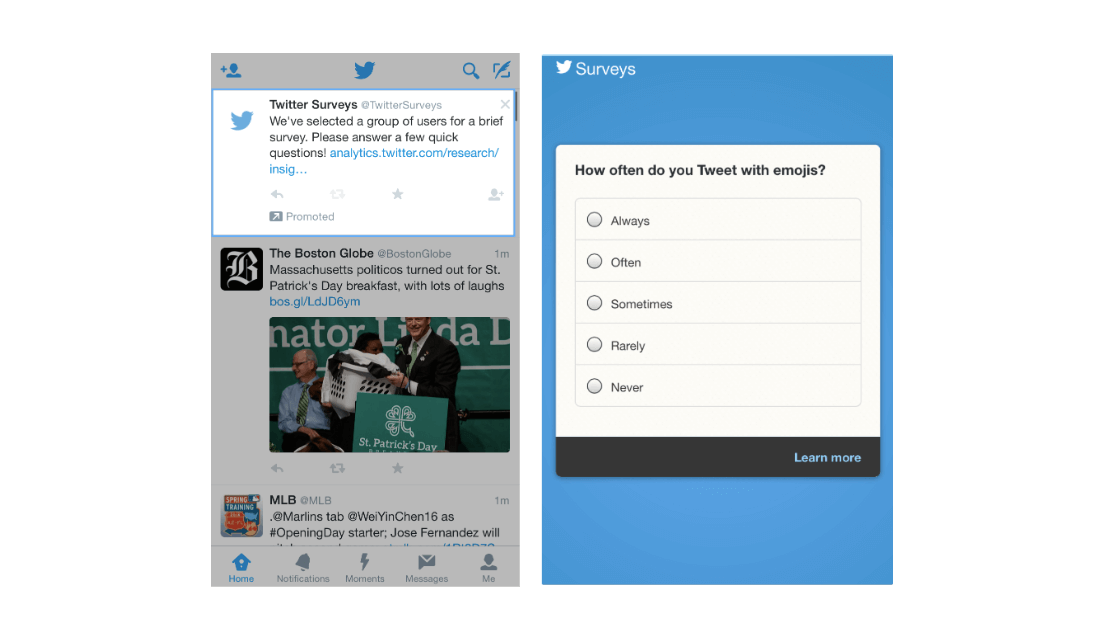
X is arguably the most popular social media platform in the world, and with an audience this size, you ought to have an in-app survey UI design that doesn’t annoy them.
X blends its survey to be a part of the usual in-app experience. The company makes its surveys a permanent section on the feed so that users can discover these at their own pace without getting surveys popping up in their faces.
X’s survey gives users an external link that redirects them to the survey page. The page contains multiple-choice questions to help users accurately understand its products and services.
With that, we’re done with examples of good in-app survey designs.
Let’s now move to the crux of the blog and look at the best practices for survey design.
In-App Survey Best Practices to Follow in 2026
Creating good in-app survey designs is not as easy as it looks. You need to have a plan in mind, and these best practices will help you design engaging surveys. Let’s have a look at them:
1. Pay Attention to the Context
When brands build surveys, they normally ask broad questions that cover a range of scenarios because it’s very common to assume that you might only get one opportunity to ask your visitors.
But here’s the problem – Going all out with just one survey does more harm than good.
When your users get bombarded with a range of questions, some of which they probably won’t even relate to, they would just end up abandoning you, bringing you back to square one. To tackle this, you can start by breaking down your questionnaire into smaller surveys, where one survey should only talk about one feature or particular experience related to the brand.
For instance, you can create the following:
- One survey for the homepage and its layout
- Another one is to gauge product experience and recommendations
- A survey that collects insights about the overall brand experience
- A separate post-purchase survey to check the checkout process, etc.
Once you do this, you can focus on the customer’s journey. A big problem with loose contexts is that people often ask questions sooner than they normally should.
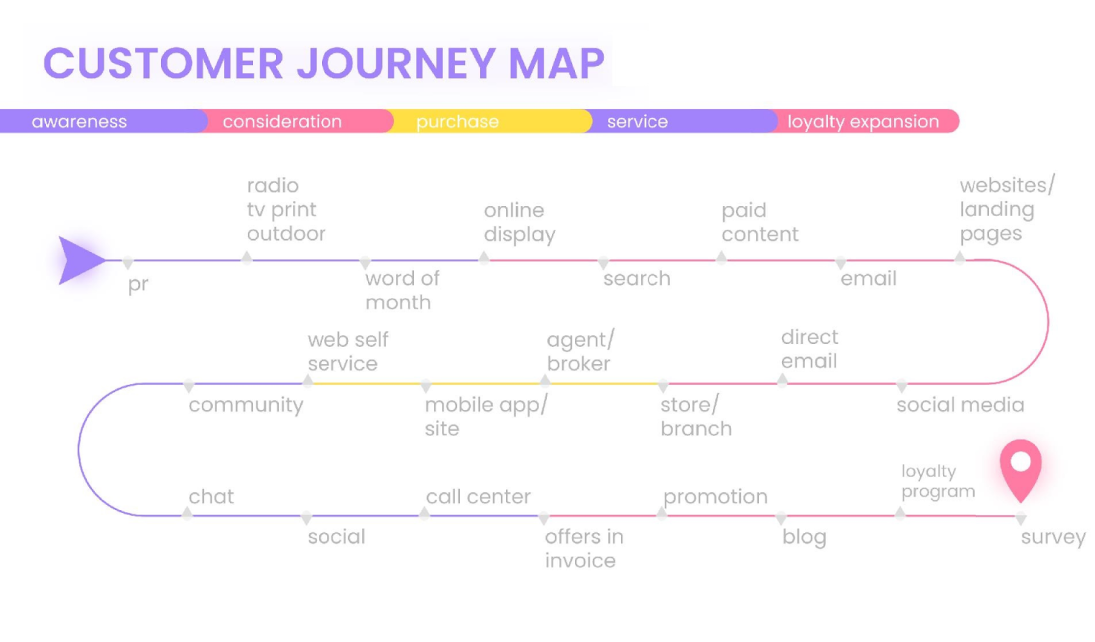
For this, you would have to dive into the technicals of your in-app survey designs to trigger your surveys based on relevant actions from your customers. Going back to our previous example, if you want to collect data about your checkout page, you should trigger your surveys only when a user makes a purchase. This way, your users will get relevant insights from them.
2. Match the Look & Feel of Your Brand
Your in-app surveys should be part of your application’s UI. Create one that’s in harmony with your brand’s look and feel so that users don’t think of it as some added element that holds no value.
When users come across plain and generic surveys, they might hesitate to fill them out because they fear they might be from an unknown third-party source. But branded surveys are different. Users can instantly recognize the brand, and it encourages them to share their thoughts and opinions.
Also, don’t forget that customers emotionally connect to your brand, so branding your surveys can initiate that emotional response and help them differentiate you from your competitors.
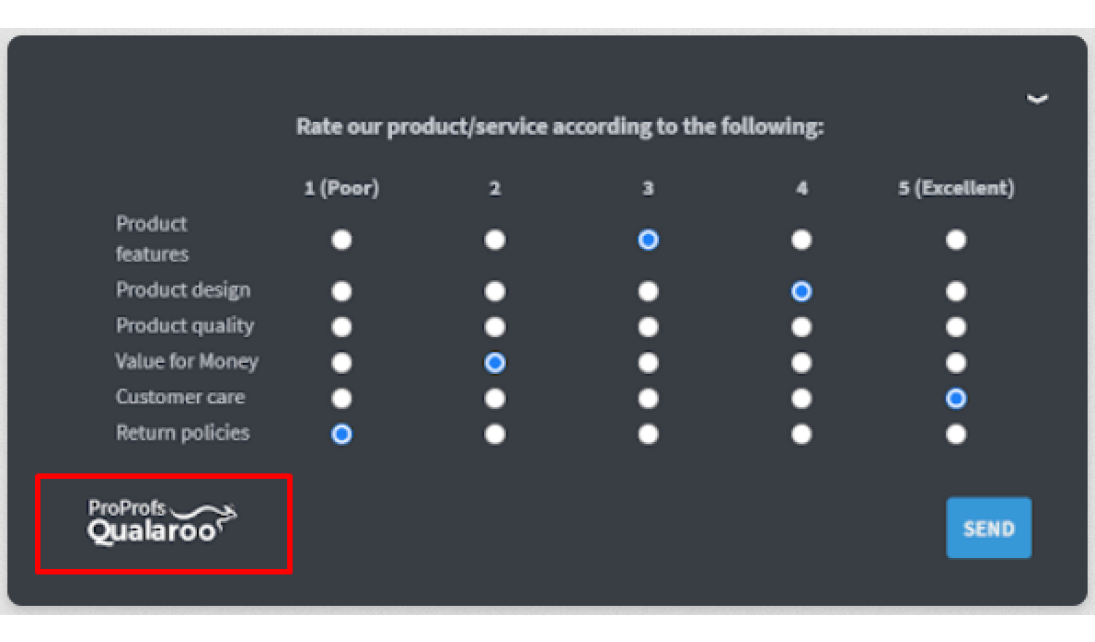
So, how do you brand your surveys and create a stellar in-app survey design?
For starters, you would have to customize the theme of your surveys by choosing your corporate colors and customized font. Style your layout and buttons as you do for your brand and marketing campaigns. Once your theme is set, you can add your logo to the in-app survey’s top left, top right, bottom left, or bottom right corner for maximum visibility.
Pro tip: Always leave white space around your logo to make it look floating and appealing.
Also, for the task, you can pick online in-app survey tools like Qualaroo, which offers many customization options, including white label and custom branding capabilities.
3. Keep It Short & Simple
A tip that we cannot stress enough is keeping your in-app surveys short, crisp, and simple. They should be easy enough to comprehend and shouldn’t take more than a couple of minutes of your user’s time. If you’re confused about what to ask, just ask the questions you can’t afford to miss.
Here’s an example of a short and simple in-app survey question:
Are you satisfied with the responsiveness of our application on your device?
- Yes
- No
- Somewhat
When your questions are short and simple, users can quickly review your survey and decide to participate because they perceive it as a simple task they can breeze through. Arguably, the best practice in survey design for implementing this would be using the built-in survey templates. These are designed to help you ask the right questions without making things complicated.
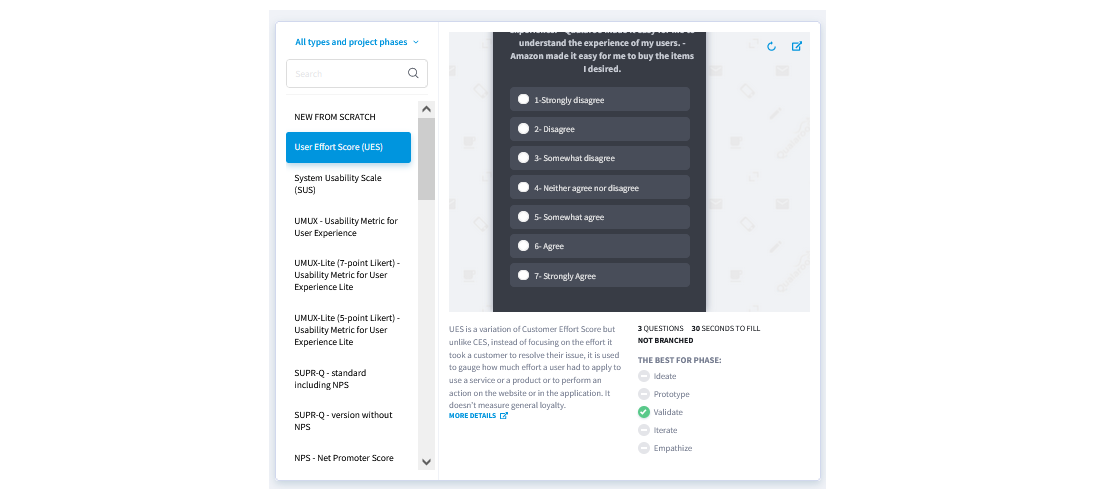
If you’re wondering how many questions you should ask, I suggest that one—or two-question surveys are always the best for completion rates and the overall user experience.
You can also add more follow-up questions to gather in-depth information. Just test your survey before deploying it.
Pro tip: The questions will eventually depend on the type of information you’re trying to collect, but your goal should always be to ask the fewest questions possible to maximize participation.
4. Avoid Bias in Your Surveys
The possibility of bias seeping into your in-app survey design is quite high, and you should avoid it at all costs. Even the most carefully created in-app survey designs are vulnerable to such problems. The first part of the in-app survey design is avoiding such biases to ensure that when you structure your questions, they don’t allude to personal opinions.
By keeping your questions neutral, you don’t risk influencing the decisions of your audience through personal opinions and can also ensure credible data collection at the same time.
To give you an example, here’s what a leading question looks like:

Here is what a neutral question looks like:

Similarly, the other half of the bias in your survey design comes in through your sample size. If you leave out participants from your surveys due to their underlying characteristics, it’s called sampling bias. To deal with this, ensure your sample size is selected randomly and apply no filters to exclude a certain group of participants.
For instance, you want to conduct a UX survey of your application in Canada and need to ensure that 50% of your respondents are male users selected at random. The next 50% of your respondents should be random female users.
It’s easily doable in the targeting section of your online feedback tool, which is designed to reduce bias. It’ll help you avoid both gender and sampling bias in your surveys and help collect reliable data.
5. Use Targeting & Segmentation
The right question in the appropriate context targeting the right person can make all the difference in the world. But how do you know what questions to ask and to whom? That’s where segmentation can help you crack the code.
You can segment your users based on underlying characteristics such as gender, age, location, or the features they have used on your application.
For instance, once your users have interacted with the filtering option on your app, you can create a separate segment of those customers and ask a CSAT question based on their interaction.
You can pose your question like this:

Once you create user segments, you can start focusing on targeting the right audience segment. Many users may never have encountered the feature you’re trying to collect data on, so you need to consider the customer’s journey.
Going back to our previous example, if you want to gather data about your homepage, you can target your surveys to show up for users who have spent more than 5 minutes on your app.
Similarly, if you have released a feature only in a specific country, let’s say Spain, and only on Android devices, you can geographically target your surveys to only show up to the users in Spain who use an Android device.
6. Use Open-Ended Questions
Open-ended questions are a crucial part of in-app survey designs. This question type lets app users speak their minds as they can give their thoughts and opinions on your application.
Your open-ended questions can begin like this:
- Please tell us more about how….
- What more can we do to….
- What would you like to….
- How can we….
A good thing about open-ended questions is that you get many insights about your mobile app and can also identify your most engaged customers.
One thing to note is that you shouldn’t ask open-ended questions in isolation. It’s best to ask a closed-ended question first and then follow up with an open-ended question. Add them as follow-ups to the closed-ended questions to gather more nuanced data. This will let users leave contextual feedback telling you how you can improve your products and services.
7. Analyze & Track the Data
Collecting feedback is just 50% of the work; the second half involves analyzing and tracking the data and taking necessary actions.
Analyzing the feedback offers the following benefits:
- It helps to refine your in-app survey design by tracking the completion rate and type of responses.
- It lets you quickly uncover users’ pain points to close the feedback loop.
- It solidifies your reputation in users’ minds to motivate them to stick with your brand.
- You can see where users drop off from the survey to make the required changes to the design.
And if you’re not getting the expected responses, you can optimize the questions for improved feedback quality. The simplest way to analyze the data is to dig into your responses and get a general overview of overall sentiment.
Now, it sounds simple and very much doable. But manual analysis would take ages when thousands of responses pour in. That’s where AI-based analysis systems can prove helpful. They can analyze open-ended feedback and automatically categorize it based on user sentiments.
Moreover, they can track the impact of customer experience scores like NPS and CSAT on your business KPIs like revenue. And it’s all in real-time.
Once you have the insights, you can contact your unhappy customers to address their problems. You can also implement the lessons learned in the next campaign to improve the overall in-app survey design.
Common Mistakes to Avoid With In-App Surveys
Even with the best intentions, in-app surveys can backfire if you overlook some basics. Here are the pitfalls to watch out for—and what to do instead:
| Mistake | Why It Hurts | What to Do Instead |
|---|---|---|
| Asking too many questions | Leads to survey fatigue and drop-offs. Users don’t want to spend 5–10 minutes filling forms. | Keep it to 1–3 core questions. Use branching logic or follow-ups only when necessary. |
| Triggering surveys at the wrong time | Interrupts the user experience and feels intrusive. | Trigger surveys after meaningful actions (e.g., post-purchase, post-support chat), not mid-task. |
| Using leading or biased questions | Skews results and gives you unreliable data. | Keep wording neutral and test your questions internally before deploying. |
| Ignoring negative feedback | Dissatisfied users feel unheard and may churn. | Close the loop—thank them, resolve issues, and let them know their feedback drove improvements. |
| Not personalizing surveys | Feels generic and irrelevant, lowering engagement. | Segment users (by device, geography, usage behavior) and tailor questions to context. |
| Failing to test on mobile | Most app users are mobile-first; clunky surveys cause drop-offs. | Always preview surveys across devices before launch. |
Create In-App Survey Designs That Make an Impression
In-app survey designs are not just about pretty looks and aesthetic feel; they go further than that and include wording, placement, button layout, targeting, triggering, and more.
The challenge is to find the right mix of all these elements.
And if you do, you can collect targeted insights from app users to fuel your product development, marketing campaigns, retention efforts, and more.
So, choose the right survey tool and implement these strategies and ideas to design the perfect in-app survey. This will boost your campaign’s response rates, feedback quality, and ROI.
Frequently Asked Questions
What is the response rate for in-app surveys?
In-app surveys typically see 16–30% response rates, with 25% being a solid benchmark. Rates are higher than email or web surveys because they catch users in context, but timing, design, and length heavily influence completion.
How many questions should an in-app survey have?
Keep surveys short—ideally one to three questions. Longer surveys risk abandonment and skew results. Short, focused questionnaires boost completion rates, preserve the user experience, and still deliver actionable insights.
When is the best time to launch an in-app survey?
The best moment is after meaningful user actions—like completing a purchase, finishing onboarding, or using a new feature. Asking at the right time ensures feedback is fresh, relevant, and tied to the experience you’re evaluating.
Should you incentivize in-app surveys?
Incentives can boost response rates, but they risk attracting less thoughtful answers. Use them sparingly for longer surveys or low-response contexts. Often, showing users how their feedback leads to improvements is incentive enough and builds stronger trust than small rewards.
FREE. All Features. FOREVER!
Try our Forever FREE account with all premium features!


 We'd love your feedback!
We'd love your feedback! Thanks for your feedback!
Thanks for your feedback!


